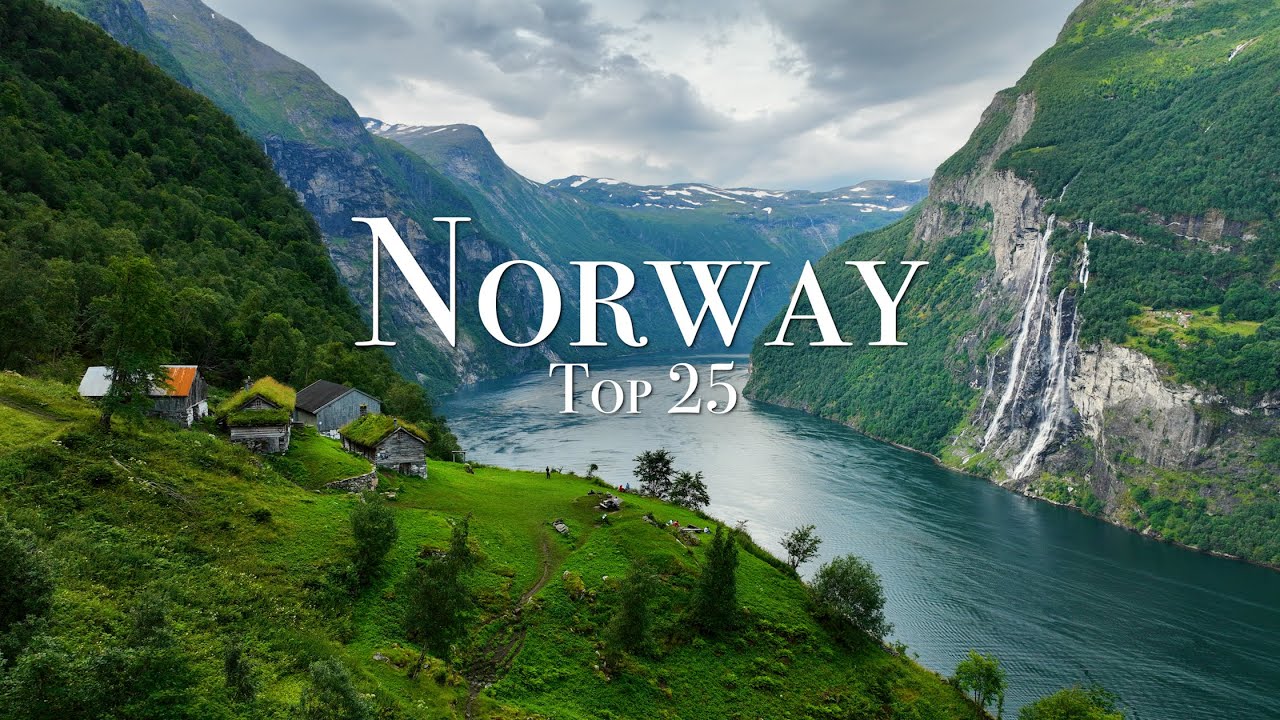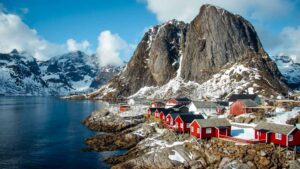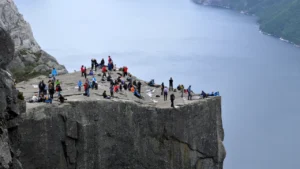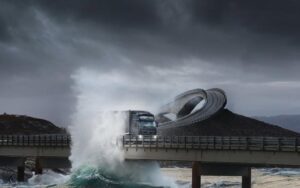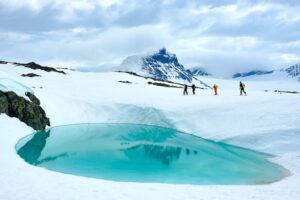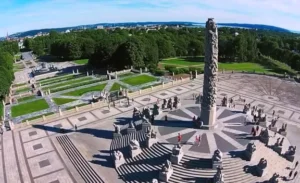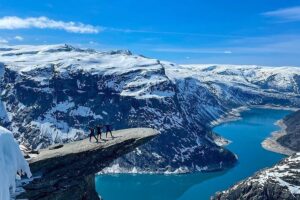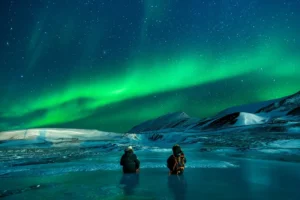Norway is a country of breathtaking natural beauty, rich cultural heritage, and high living standards, making it one of the most desirable travel destinations in the world. Known for its dramatic fjords, snow-capped mountains, and the mesmerizing Northern Lights, Norway offers a unique blend of adventure and serenity. It is also one of the safest, cleanest, and most well-organized countries, with excellent infrastructure and a strong emphasis on sustainability and environmental protection. The locals are generally friendly, speak excellent English, and are proud of their Viking history and deep-rooted traditions. Whether you’re exploring the vibrant streets of Oslo, hiking in the Lofoten Islands, or cruising through the Geirangerfjord, a trip to Norway promises a deeply rewarding experience. With its mix of awe-inspiring nature, modern comforts, and cultural richness, a journey to Norway is not just good—it’s unforgettable.
Is traveling to Norway expensive?
Yes, Norway is undeniably one of the most expensive countries to visit, consistently ranking among the top in global cost-of-living and travel indexes. From accommodation and dining to transportation and activities, prices in Norway reflect the country’s high wages, strong currency, and commitment to quality and sustainability. A simple meal at a restaurant can cost significantly more than in most other countries, and even groceries or public transit can surprise budget-conscious travelers. However, this high cost is matched by exceptional standards—Norwegian services are clean, efficient, and reliable, and the natural beauty, which includes fjords, mountains, waterfalls, and the Northern Lights, can often be experienced for free. The country also invests heavily in environmental protection and infrastructure, offering travelers a safe, seamless, and scenic experience. While the price tag may be steep, the value lies in the unforgettable experiences, the unspoiled wilderness, and the rare combination of modern luxury and raw nature—making a trip to Norway well worth the investment.
6 months of light 6 months of darkness
Actually, Norway doesn’t have a full six months of continuous day or night—but it does experience a remarkable natural phenomenon called the Midnight Sun and the Polar Night, especially above the Arctic Circle.
During summer months, places like Tromsø and Svalbard see the sun never set for several weeks to months, creating continuous daylight—this is the Midnight Sun. Conversely, in winter, these areas experience Polar Night, where the sun never rises above the horizon for weeks at a time, plunging the region into extended twilight or darkness.
While it’s not exactly six months of day and six months of night, the extreme shifts in daylight profoundly shape the culture, lifestyle, and even mental health of Norwegians living in these northern parts. It’s a stunning reminder of nature’s rhythms on the edge of the Arctic.
Other notable attractions:
The Lofoten Islands are a striking embodiment of Norway’s wild Arctic spirit—where dramatic peaks pierce the sky, turquoise fjords mirror the shifting light, and red-painted fishing cabins (rorbuer) sit quietly along rugged coastlines shaped by centuries of wind and waves. Located above the Arctic Circle, Lofoten defies its latitude with an unusually mild climate, thanks to the Gulf Stream, allowing cod fisheries to thrive since the Viking Age. The islands offer a sensory collision of extremes: in summer, the Midnight Sun floods the landscape with golden light, while winter brings the haunting beauty of the Northern Lights dancing above snow-draped mountains. Rich in Sámi culture, Norse history, and sustainable living, Lofoten is more than a natural wonder—it is a place where ancient traditions, cutting-edge environmentalism, and breathtaking scenery coexist in delicate harmony. To stand on its shores is to witness the Arctic not as a frozen void, but as a vibrant, living frontier.
Pulpit Rock (Preikestolen) is one of Norway’s most iconic natural landmarks—a staggering geological formation that rises 604 meters above the deep blue waters of the Lysefjord. This flat-topped cliff, carved by glacial forces over thousands of years, offers one of the most dramatic panoramic views in Scandinavia, drawing over 300,000 hikers annually from across the globe. The ascent, though moderate, demands endurance and rewards visitors with an awe-inspiring encounter at the edge of the earth, where sheer vertical drops meet vast, unbroken silence. Standing atop Preikestolen is more than a scenic experience—it’s a visceral moment of exposure to the raw scale and power of nature. Revered in local folklore and captured endlessly in film and photography, this natural monument is not just a highlight of Norwegian tourism but a symbol of the country’s rugged, untamed beauty and deep connection between land and soul.
The Atlantic Ocean Road (Atlanterhavsveien) is a masterpiece of engineering and a living sculpture carved into Norway’s wild western coastline—where man’s ambition meets the relentless power of the sea. Stretching over 8 kilometers, this serpentine road leaps from islet to islet across a series of gracefully curved bridges, the most famous being the Storseisundet Bridge, which appears to defy gravity in stormy weather. Built to withstand some of the harshest ocean conditions on Earth, the road is both a critical transport link and a dramatic travel destination, offering sweeping views of the Atlantic, crashing waves, and the ever-changing sky. Named the “World’s Most Scenic Drive” by multiple travel authorities, it’s not just a road—it’s a cinematic journey through wind, water, and wilderness. Whether drenched in salt spray or glowing under the midnight sun, the Atlantic Ocean Road captures the essence of coastal Norway: resilient, raw, and breathtakingly beautiful.
Jotunheimen National Park, often referred to as the “Home of the Giants,” is the beating heart of Norway’s alpine wilderness—an awe-inspiring expanse of jagged peaks, deep valleys, and ancient glaciers that embody the raw power of nature. Spanning over 1,100 square kilometers, it is home to Galdhøpiggen and Glittertind, the two highest mountains in Northern Europe, standing as silent sentinels above a land sculpted by ice and myth. Rich in Norse legend, Jotunheimen was believed to be the realm of the Jötnar—the giants of ancient mythology—and that mythic grandeur still lingers in its vast, untamed terrain. The park is a sanctuary for rare Arctic flora and fauna, a haven for serious mountaineers, and a pilgrimage site for hikers on the legendary Besseggen Ridge. But beyond its physical scale, Jotunheimen offers something deeper: a visceral, humbling reminder of the planet’s ancient forces, untouched silence, and the enduring human desire to explore what lies beyond the familiar.
Vigeland Sculpture Park in Oslo stands as a monumental celebration of the human condition—an open-air museum where over 200 bronze, granite, and wrought iron sculptures explore the full spectrum of life’s emotions and experiences. Created by renowned Norwegian sculptor Gustav Vigeland, the park transcends traditional boundaries between art and nature, inviting visitors to walk through a narrative of birth, struggle, love, and death rendered in powerful, evocative forms. At its heart towers the Monolith, a 14-meter-high column carved from a single block of granite, depicting 121 intertwined human figures reaching skyward—a testament to humanity’s unyielding aspiration and collective spirit. Beyond its artistic mastery, Vigeland Park is a place of reflection, where each sculpture resonates with universal themes of connection, vulnerability, and resilience. It’s not merely a park—it’s a profound visual poetry carved in stone and metal, inviting contemplation on what it means to be human.
Trolltunga, or “The Troll’s Tongue,” is one of Norway’s most breathtaking and formidable natural landmarks—an outstretched rock platform suspended nearly 700 meters above the shimmering waters of Lake Ringedalsvatnet. Formed during the last Ice Age, this narrow, jutting cliff embodies both the raw power of glacial sculpting and the mystical allure of Nordic folklore, where it is said to be the tongue of a troll turned to stone by sunlight. The challenging 27-kilometer round-trip hike to reach Trolltunga demands physical endurance and mental grit, but rewards adventurers with one of the most vertigo-inducing and awe-inspiring viewpoints in the world. Standing on its edge, with nothing but open air beneath, visitors experience a profound connection to the vastness of Norway’s rugged wilderness—an exhilarating encounter with nature’s grandeur that blends adrenaline, beauty, and ancient myth into an unforgettable moment suspended in time.
Svalbard stands as one of the world’s last true frontiers—a remote Arctic archipelago halfway between mainland Norway and the North Pole, where stark glaciers, rugged mountains, and icy fjords create an otherworldly landscape both beautiful and forbidding. Governed by a unique treaty that balances environmental protection with international cooperation, Svalbard is a hub for polar research, climate science, and resilient human settlement in extreme conditions. Its fragile ecosystem is home to polar bears, reindeer, Arctic foxes, and a surprisingly rich array of marine life, making it a vital sanctuary in a warming world. Beneath its frozen surface lies the Global Seed Vault, a monumental insurance policy for humanity’s agricultural future, safeguarding millions of seed varieties against global catastrophes. Life on Svalbard is a testament to human adaptability and the fierce will to coexist with nature’s harshest extremes, where the polar night’s darkness gives way to endless summer days under the Midnight Sun, offering a profound encounter with the Arctic’s stark beauty and silent power.
